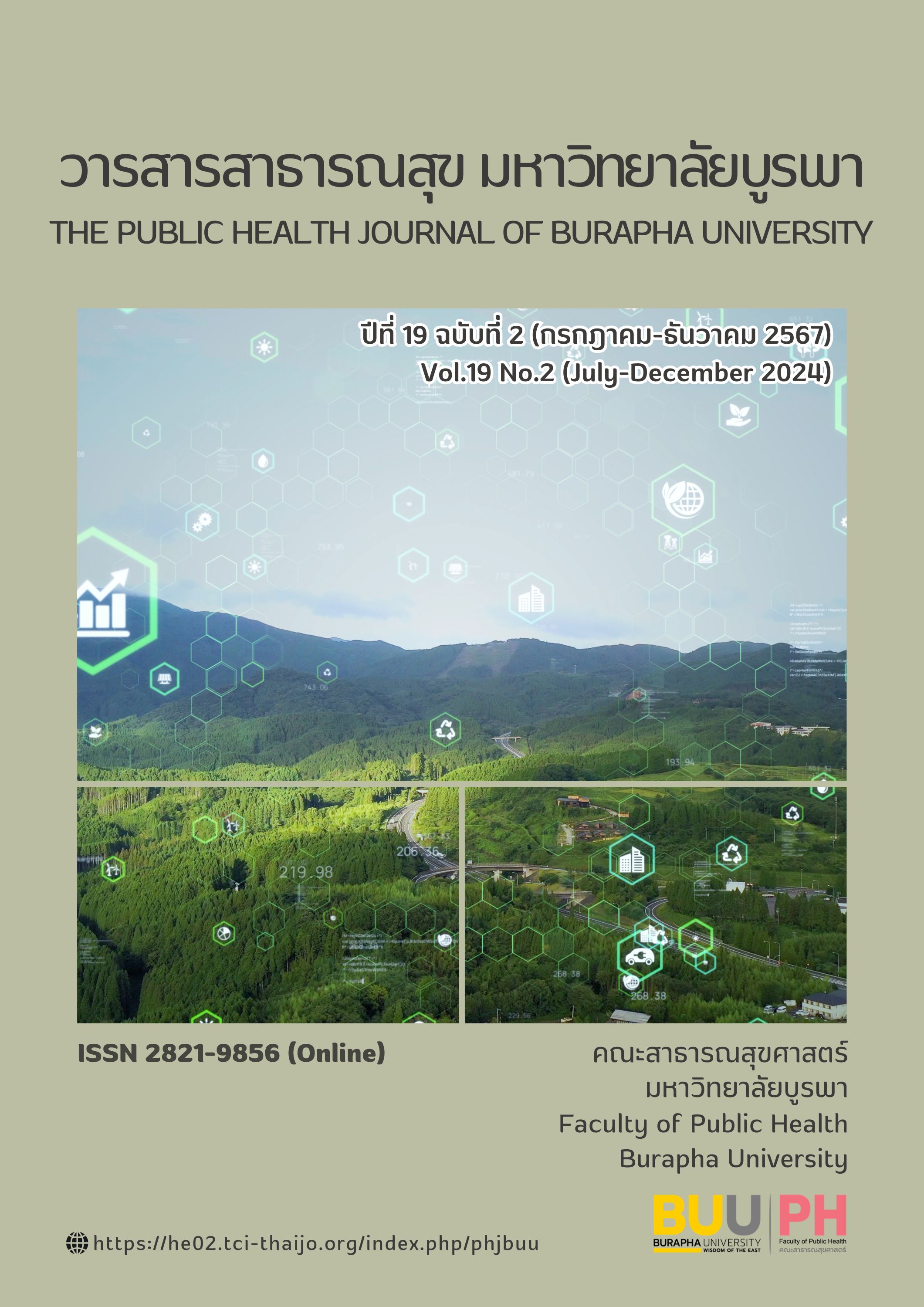ผลของโปรแกรมการพัฒนาคุณภาพชีวิตผู้ป่วยในพระบรมราชานุเคราะห์และพระราชานุเคราะห์
Main Article Content
บทคัดย่อ
การวิจัยกึ่งทดลองครั้งนี้ เพื่อศึกษา ผลของโปรแกรมการพัฒนาคุณภาพชีวิตผู้ป่วยในพระบรมราชานุเคราะห์และพระราชานุเคราะห์ มี 2 ระยะ คือ 1) เพื่อการพัฒนาความรู้ความเข้าใจ ประชากร คือ บุคลากรสาธารณสุขที่รับผิดชอบงาน ทั้งหมด จำนวน 152 คน รูปแบบการวิจัยกลุ่มเดียววัดก่อน-หลัง เครื่องมือการวิจัย ได้แก่ กิจกรรมการพัฒนาความรู้ความเข้าใจคุณภาพชีวิตโดยการบรรยายเชิงปฏิบัติการ การออกแบบพัฒนากิจกรรมคุณภาพชีวิต การนำเสนอและข้อเสนอแนะจากผู้เชี่ยวชาญ และแบบประเมินความรู้ มีความเชื่อมั่น เท่ากับ 0.71 ระยะเวลา 3 วัน และ 2) เพื่อทดลองใช้โปรแกรมคุณภาพชีวิต กลุ่มตัวอย่าง คือ ผู้ป่วยในพระบรมราชานุเคราะห์และพระราชานุเคราะห์ จำนวน 339 คน การสุ่มแบบอย่างง่าย เครื่องมือการวิจัย คือ โปรแกรมคุณภาพชีวิตที่พัฒนาขึ้น ได้แก่ การดูแลสุขภาพตนเอง การเสริมสร้างการเห็นคุณค่าตนเอง การสร้างสัมพันธภาพสุขภาพชุมชน และการจัดการสิ่งแวดล้อมเพื่อความปลอดภัย ระยะเวลา 12 สัปดาห์ และแบบวัดคุณภาพชีวิต(WHO) มีค่าความเชื่อมั่น 0.84 ค่าความเที่ยงตรง 0.65 สถิติที่ใช้ ได้แก่ ร้อยละ ค่าเฉลี่ย ส่วนเบี่ยงเบนมาตรฐาน และการทดสอบค่าที ผลการศึกษา พบว่า 1). ภายหลังได้รับการพัฒนาความรู้ความเข้าใจบุคลากรสาธารณสุขมีความรู้คุณภาพชีวิต ดีกว่าก่อนได้รับความรู้ อย่างมีนัยสำคัญทางสถิติที่ระดับ 0.01 และ 2). ภายหลังการเข้าร่วมโปรแกรม ผู้ป่วยในพระบรมราชานุเคราะห์และพระราชานุเคราะห์ ประเทศไทย มีคุณภาพชีวิตโดยรวม และแยกตามองค์ประกอบ ได้แก่ ด้านร่างกาย ด้านจิตใจ ด้านสัมพันธภาพทางสังคม และด้านสิ่งแวดล้อม มีคะแนนเฉลี่ยสูงกว่าก่อนเข้าร่วมโปรแกรม อย่างมีนัยสำคัญทางสถิติที่ระดับ 0.01
สรุปและข้อเสนอแนะ: การพัฒนาความรู้คุณภาพชีวิตเพื่อนำไปประยุกต์และใช้ให้สอดคล้องกับบริบทพื้นที่ส่งผลกระทบให้คุณภาพชีวิตของผู้ป่วยสูงขึ้น หน่วยงานที่เกี่ยวข้องสามารถนำรูปแบบไปใช้เพื่อพัฒนาคุณภาพชีวิต
Article Details

อนุญาตภายใต้เงื่อนไข Creative Commons Attribution-NonCommercial-NoDerivatives 4.0 International License.
เอกสารอ้างอิง
Yupin W, Jongjit R, Sutthida C, Pochana H. Birth and stability in population and society. 1st ed. Nakhon Pathom: Institute for Population and Social Research, Mahidol University, 2014.
Siriwich P, Ponsorn W. The phenomenon of population decline in Thailand: an analysis at the district and city levels. Sarasat 2021; 3: 585-598.
Jinangkur R. National Strategic Master Plan 20-Year Period (2017-2036) [Internet]. 2018. [cited 2024 July 17]. Available from: http://www.nakhonpathom.go.th
Athipat S, Attiyaporn C, Nopporn K. Impact and solutions to the hidden population problem of local administrative organizations: A case study of Theparat Subdistrict Municipality, Ban Pho District, Chachoengsao Province. Ratchaphruek Journal 2020; 18(2): 119-127.
Wanpen P. Development of the elderly care system in the community. Khon Kaen University/Khon Kaen. DOI : https://doi.nrct.go.th/ListDoi/listDetail?Resolve_DOI=10.14457/KKU.the.2009.150,2009.
Somsak Chunharasmi. Annual report on the situation of the Thai elderly 2010. Thai Institute of Elderly Research and Development Foundation (TIERF), Bangkok; 2010.
Buddhadasa Bhikkhu. Youth Dharma for Youth. Bangkok: Sukhaphai Jai, 2002.
The WHOQOL GROUP. The World Health Organization Quality of Life Assessment (WHOQOL): Position paper from the World Health Organization. Social Sciences Medicine 1995; 41(10):1403-1409.
Sharma. Population and Socio-Economic Development Population Trends Resources and Environment : Handbook. New delhi, 1975.
Anant N. A model of Buddhist psychology for self-development that affects the learning organization. Journal of Social Science and Buddhist Anthropology 2020; 5(3): 66.
Bloom, B.S. Taxonomy of Educational Objectives, Handbook I: The Cognitive Domain. New York: David Mckay Co inc; 1956.
Thanakorn P. Research methodology for health promotion management. Nakhon Ratchasima: Lertsin Printing, 2021.
Office of Royal Initiatives, Royal Celebration Projects and Special Activities. Information on patients under royal patronage and royal patronage in Thailand. Office of Royal Initiatives, Royal Celebration Projects and Special Activities, Office of the Permanent Secretary, Ministry of Public Health, Ministry of Public Health, 2023
Krejcie, R.V., & D.W. Morgan. Determining Sample Size for Research Activities. Educational and Psychological Measurement 1970; 30(3) : 607 – 610.
Suwat M, Wiravan T, Wanida P. The World Health Organization's Brief Quality of Life Indicators (WHOQOL – BREF – THAI). Chiang Mai: Project to develop a ready-made program for surveying mental health in the area. 2011.
Kanda S, Chonticha T, Pattama P, Paphawin J, Parinda P. Assessment of knowledge, beliefs, attitudes, and behaviors among VHVs in Salok Bat sub-district, Khanu Woralaksaburi district, Kamphaeng Phet. Department of health Service Support Journal 2023; 19(2): 49-58.
Phrueda S. A Study of Factors Related to Health Behavior of People at Risk of Diabetes and Hypertension in Phichit Province. Phichit Public Health Research And Academic Journal 2021; 2(2): 43-54.
Prangtip U, Pranee T, Duangnapha B. Health Literacy and Self-protective Behaviors from Coronavirus Disease 2019 among Nursing Students. Songklanagarind Journal of Nursing 2022; 42(3):14-24.
Chanjira H, Yosapon L, Navanan P, Jerapa S, Sukanya K, Piyawadee P. Quality of life of people with chronic illness in the responsible areas of Tha Chang Sub-district Administrative Organization, Chanthaburi province. Journal of Health Science Research 2017; 11(1) : 23-32.
Chiranan P, Sutham N, Chokchai M, Supachai P, Korravarn Y. Factors Influencing Quality of Life Among Caregivers of Dependent Elderly Persons in Chanthaburi Province. Journal of Health Science 2019; 28(4): 610-619.

